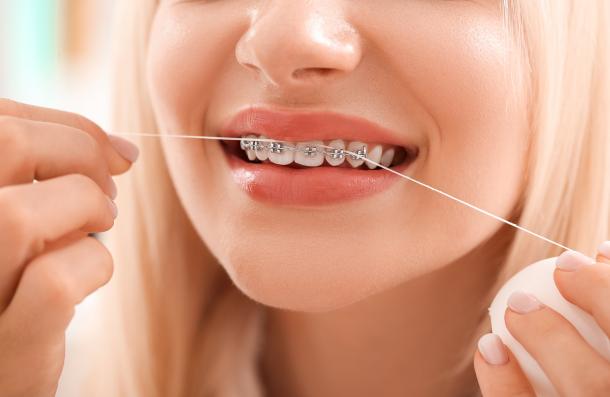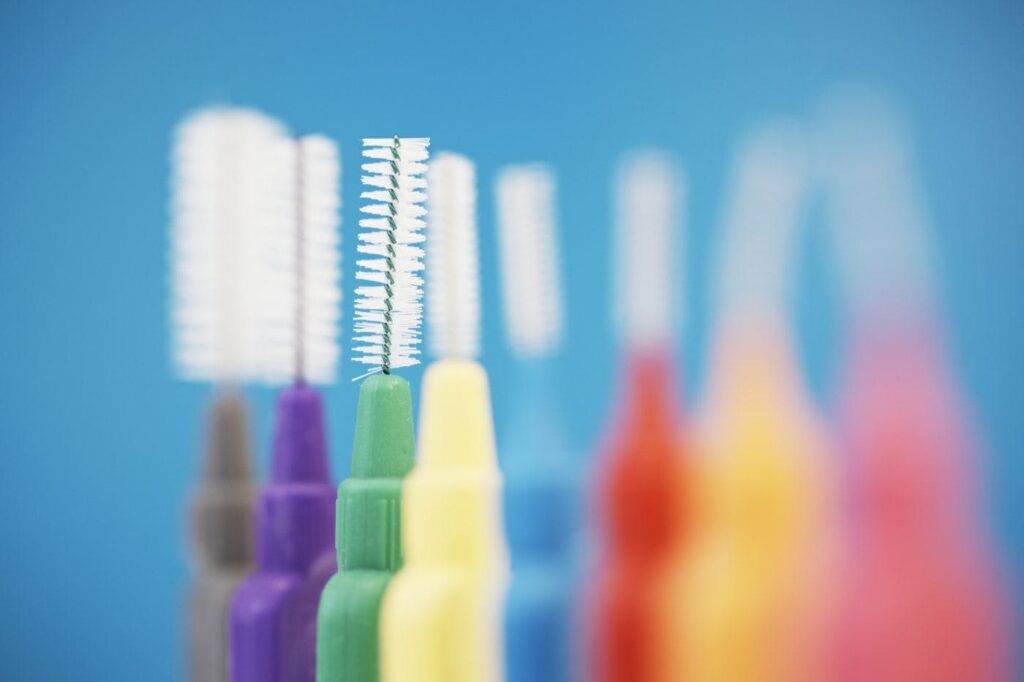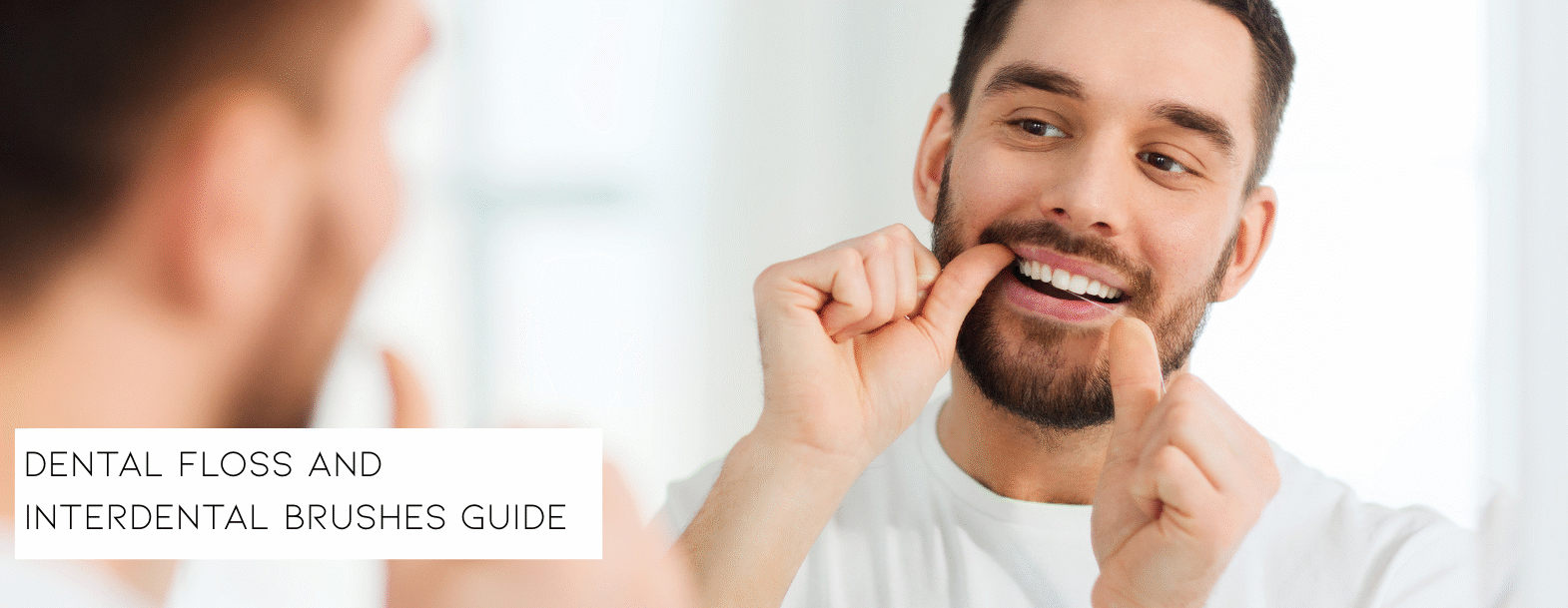Dental floss and Interdental brushes Guide
- Home
- /
- Blog
- /
- Hygiene Advice
- /
- Dental floss and Interdental brushes Guide
Our guide to using dental floss and interdental brushes.
Maintaining proper oral hygiene involves more than just brushing your teeth. Cleaning between your teeth and along the gumline is essential for removing plaque and food particles that brushing alone cannot reach.
Interdental brushes are designed to fit between teeth, with various sizes available to suit different gap widths. They can be purchased from dental practices, pharmacies, or supermarkets. Dental floss is another option, particularly useful for tighter spaces. Research suggests interdental brushes are more effective at plaque removal than floss.
From the age of 12, it’s recommended to clean between your teeth at least once daily. For children under 12, assistance with flossing may be necessary. When using interdental brushes, select the appropriate size for your gaps and gently guide the brush through each space. If your gums bleed initially, it’s normal as they adjust to the cleaning, but if bleeding persists, seek advice from your dentist.
Dental floss should be used in a gentle, stroking motion between teeth. Avoid snapping the floss into gums to prevent injury. Maintain a consistent pattern when flossing, starting from the top left and moving to the bottom, then repeating from left to right.
If dexterity is an issue, floss holders can be helpful. Like with interdental brushes, initial tenderness or bleeding may occur when flossing, but this should improve with regular use.
By incorporating these techniques into your oral care routine, you can effectively remove plaque and reduce the risk of gum disease. Remember, good dental health starts with consistent and thorough oral hygiene practices.

To maintain optimal oral hygiene, it’s crucial to clean between your teeth in addition to brushing. This ensures the removal of plaque and food particles that brushing alone may miss.
Interdental brushes are specially designed to fit between teeth, offering a more effective cleaning method than traditional brushing. These brushes come in various sizes to accommodate different gap widths, and they can be obtained from dental practices, pharmacies, or supermarkets.
Dental floss is another effective tool for cleaning between teeth, particularly in tighter spaces. It should be used in a gentle, stroking motion to avoid injuring the gums. Dental tape, which is thicker than floss, can also be used for larger gaps.
From the age of 12, it’s recommended to clean between your teeth at least once daily. Consistency is key to ensuring thorough cleaning and preventing plaque buildup. For children under 12, assistance with flossing may be necessary.
Select the appropriate size interdental brush for your gap width and gently guide it through each space between your teeth. Initially, you may experience some bleeding or tenderness as your gums adjust to the cleaning process. However, if bleeding persists, it’s advisable to seek advice from your dentist.
Break off about 45 centimeters of dental floss and wind it around one finger of each hand. Hold the floss tightly between your thumbs and forefingers, leaving no slack. Use a gentle ‘rocking’ motion to guide the floss between your teeth, curving it into a C-shape against each tooth and stroking the side to remove plaque.
There are various types of dental floss available, including waxed, unwaxed, flavoured, tape, and even specialized tools like picks or water flossers. Choose one that you’re comfortable using and fits well between your teeth.
Cut a piece about 18 inches long. This length allows you to use a clean section for each tooth.
Wind most of the floss around the middle finger of one hand and the rest around the middle finger of the other hand. Leave about 1-2 inches of floss to work with.
Hold the floss tightly between your thumbs and index fingers, leaving enough slack to guide it between your teeth.
Gently glide it beneath the gumline on both sides of the tooth. Be sure to go as low as you can without causing discomfort.
As you move from tooth to tooth, use a fresh section to avoid redistributing plaque.
The molars at the back are often missed. Make sure to give these teeth as much attention as the others.

Maintain a consistent pattern when cleaning between your teeth, starting from the top left and moving to the bottom, then repeating from left to right. This systematic approach ensures thorough cleaning and reduces the likelihood of missing any teeth.
If dexterity is an issue, floss holders can be helpful tools for cleaning between teeth. Like with interdental brushes, initial tenderness or bleeding may occur when using dental floss, but this should improve with regular use.
By incorporating these techniques into your daily oral care routine, you can effectively remove plaque and reduce the risk of gum disease. Remember, consistent and thorough oral hygiene practices are essential for maintaining optimal dental health.
“Very friendly and welcoming. Brilliant service well recommended 👌”
“I recently joined this practice and have already had my initial review and my first filling. Both visits were handled with real professionalism and care. The staff are friendly and welcoming, and my dentist...”
“Just before going on a long anticipated holiday I had toothache and was frantic. I phoned the practice and the kindness and understanding of the staff was such a relief. I was seen that...”
“My dentist took great care over my repair, i thought. In fact i thought that she was quite excellent”
“Very professional and caring. I’m halfway through my dental implant and have received excellent treatment.”
“I broke a tooth on Sunday evening. I rang on Monday, not expecting to be seen for weeks as I wasn't in pain. Despite the practice being shorthanded I was seen on Friday morning...”
“My first appointment was an initial inspection. The dentist was polite and friendly and very helpful in explaining what he was doing and why as well as answering my questions. The whole experience was...”
Error: No feed with the ID 2 found.
Please go to the Instagram Feed settings page to create a feed.



